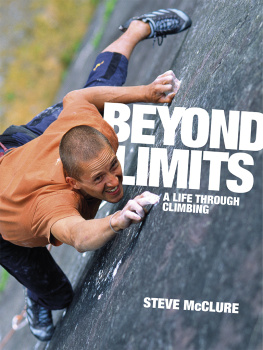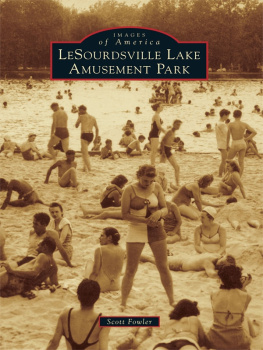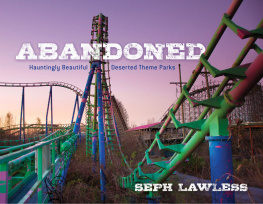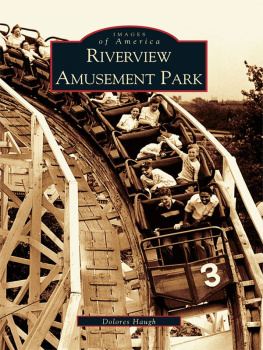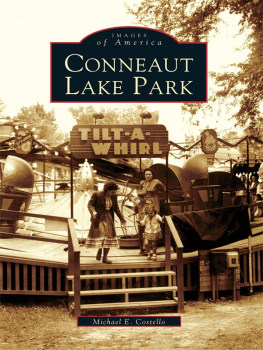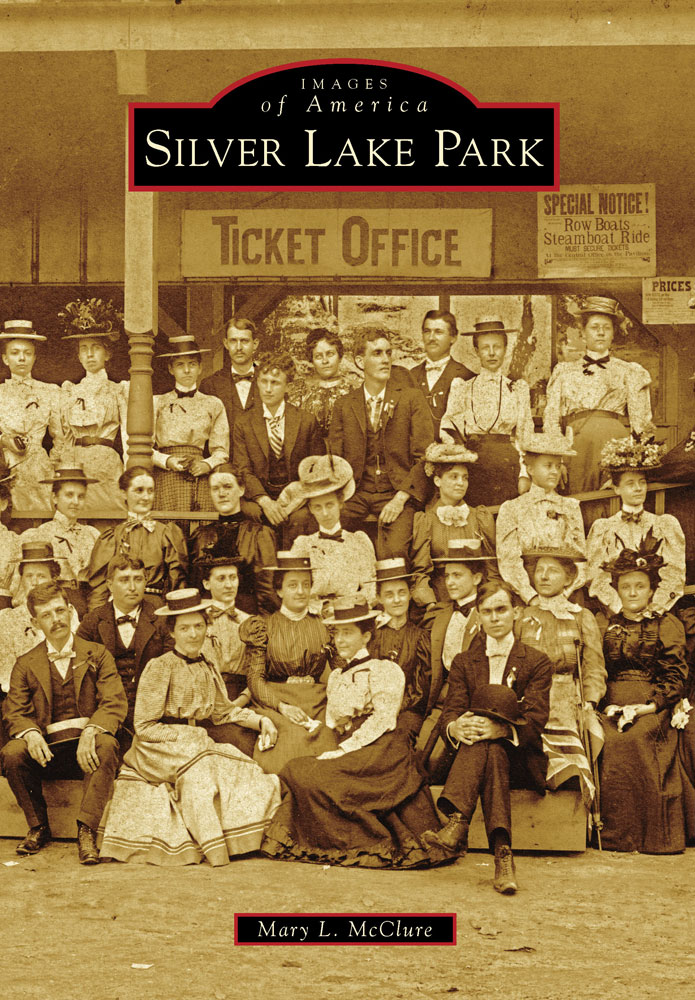
IMAGES
of America
SILVER LAKE PARK
ON THE COVER: Victorian visitors pose in front of the ticket office at one of Silver Lake Parks early dance halls. While most visitors to modern amusement parks dress quite casually, these excursionists are elegantly attired. (Cuyahoga Falls Historical Society Museum.)
IMAGES
of America
SILVER LAKE PARK
Mary L. McClure

Copyright 2014 by Mary L. McClure
ISBN 978-1-4671-1175-1
Ebook ISBN 9781439642634
Published by Arcadia Publishing
Charleston, South Carolina
Library of Congress Control Number: 2013953710
For all general information, please contact Arcadia Publishing:
Telephone 843-853-2070
Fax 843-853-0044
E-mail
For customer service and orders:
Toll-Free 1-888-313-2665
Visit us on the Internet at www.arcadiapublishing.com
To the historical societies, libraries, museums, and other individuals who play such a vital role in preserving and promoting local history
CONTENTS
ACKNOWLEDGMENTS
One of the many joys of writing local history books is visiting museums, libraries, historical societies, and local collectors who so generously share their resources and expertiseand who really help bring history to life. In the case of this book about Silver Lake Park, I was truly honored to meet a number of wonderful people with tremendous insights into the park, including several descendants of the parks founder. You will see the names of many of these kind and knowledgeable people and institutions throughout this book along with the marvelous images they contributed.
Many thanks also to family and friends who contributed ideas for the book and served as a sounding board for the project. Their love and support made this book possible.
As is often the case when researching topics from a bygone era, there are a number of challenges, including past historical accounts that vary widely as to dates, spelling, and other details. Extra care has been taken, wherever possible, to use primary research and other materials to reconcile discrepancies and present a compelling history of the special place that was Silver Lake Park.
INTRODUCTION
When 16-year-old Ralph Lodge told his father he hoped one day to be able to buy the beautiful body of water now known as Silver Lake, his father, George, smiled, thinking it was a boyhood whim. When, 28 years later, Ralph did buy the lake and announced plans to create a park along its shores, some area residents thought it was a fanciful dream. And when Ralph began planting 1,000 maple trees on his new property to beautify the grounds, local farmers shook their heads, thinking he was ruining good farmland.
In the end, however, it was Ralph Lodge and his family who had the last laugh when the modest summer resort he established grew to become one of Ohios best loved amusement parks. With several dozen rides and attractions ranging from roller coasters, a merry-go-round, miniature railway, and water toboggans to swimming, boating, camping, live animal exhibits, a popular Chautauqua series, an early aviation field, and one of the largest dance floors in the area, Silver Lake Park soon became the Coney Island of the West.
Ralph Lodges dream to buy Silver Lake began in 1846, when Ralph and his father, George H. Lodge, were performing masonry work on a Stow Township home owned by the Thorndyke family. After completing the days work, father and son would cross the road and enjoy a cool, relaxing dip in Silver Lake, which was then known as Stow Lake or Wetmores Pond. It was then that Ralph first mentioned his desire to purchase the lake and live along its shores.
Many years later, after having established a successful career as a market gardener in Cleveland, Ralph returned to the area for a visit, and his interest in the lake was rekindled. As a result, in 1874, he purchased the 100-acre Silver Lake and approximately 35 acres on its southwest shores. Two years later, he moved his wife and family to their new homestead and began setting out a number of crops. Initially, those farming operations were the familys primary source of income. However, in the meantime, Lodge saw the potential to generate additional income by offering boating, fishing, swimming, or picnic privileges at the lake.
At the start, Lodges hopes for this enterprise were relatively modest. He told his father he could see the time when he might earn as much as $100 a day from his resort. Little did he know that during the parks peak years in the early 1900s, Silver Lake Park would grow to encompass approximately 600 acres, generate $2,000 to $5,000 a day, and employ approximately 100 to 150 people. A model of self-sufficiency, the park would also go on establish its own bakery, garden, police force, electric plant, and water and sewage systems.
In its early years, however, Silver Lake Parks operations were far more modest. According to Ralph Lodges son William, attendance at the park was initially so erratic that the man who operated the refreshment stand often didnt bother to open for the day. Fortunately, those slow days did not last, and attendance figures steadily climbed as more area schools, churches, and businesses chose Silver Lake as their preferred destination for picnics and reunions.
The park received its next major boost in the early 1880s, as railway lines established additional excursion stops down the road at Cuyahoga Falls. Up to that time, the beauties of Silver Lake Park were primarily known to local residents. However, thanks to the popularity of the High Bridge Glens and Caves park, the Cleveland, Akron & Columbus (CA&C) Railway announced it was establishing an excursion stop/platform at Cuyahoga Falls for travelers wishing to visit the Glens. According to William Lodge, after the CA&C stop was added, many out-of-town visitors who came to see the Glens or nearby Gaylords Grove heard about how lovely Silver Lake was and made the 1.5-mile carriage ride to enjoy that parks amenities. Upon returning home, those excursionists told their friends about Silver Lake, raising the parks visibility throughout the state and creating a spike in tourism that made it feasible for Ralph Lodge to consider investing in additional improvements at his park.
By 1884, Lodge was well on his way to achieving his initial goal; Fourth of July receipts were $50.
During the parks first two decades, the Lodges added a number of features and activities for their visitors enjoyment, including dining and dance halls, a bathhouse and diving table, steamboat rides, rowboats, water toboggans, a merry-go-round, a shooting gallery, and goldfish ponds. In addition, guests could participate in camping, fishing, swimming, and baseball and purchase items from the parks refreshment stands or seashell souvenir shop.
Other improvements included a stone icehouse and one of the first attractions at the parks menagerie: an American bald eagle.
While the eagle exhibit was one of the first menagerie attractions, it was by no means the last. In 1888, Ralph Lodge received two black bear cubs, Patrick and Topsy, which were featured in the parks bear pits. Over the years, the bruin family grew, with a total of 78 cubs being raised at the park. At that time, raising black bears in captivity was considered such a rare feat that the Smithsonian Institution documented the parks techniques in a 1904 publication.
The bears were not the only animals on display at the park. The menagerie grew to include elk, deer, raccoons, monkeys, spotted lynx, pumas, Belgian hares, pigeons, squirrels, Canadian porcupines, anteaters, wolves, goats, woodchucks, owls, beavers, swans, alligators, and more.
Next page



